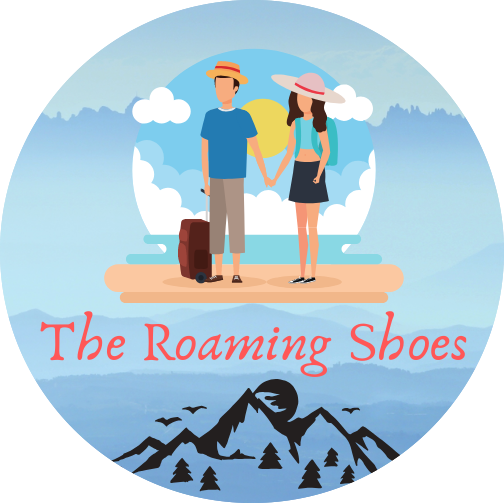Alpather Lake Trek – The Path Less Explored
We stood there on the frozen ground in awe, not able to believe the scene in front of us. Gigantic mountains blanketed in snow encircled the snowscape with a frozen lake lying in the valley below. The snow on the ground glistened like little jewels under the luminous sun. Not a single sound except the whooshing wind and no soul in sight other than the two of us and our guide. It felt as if heaven had manifested itself in front of us. This is how Alpather Lake or the Frozen Lake greeted us for the very 1st time at the onset of Winter.
Bewitched by its beauty, we decided to return again last Summer. And it presented itself in a different yet equally magnificent form. Partially thawed, its emerald water complemented the white snow. And the path leading to the lake was dotted with wild flowers and little shrubs of different colours.
Read on to know everything about this trek from Gulmarg. As we have visited in both seasons, you will find all aspects of this trek for both Summer and Winter.
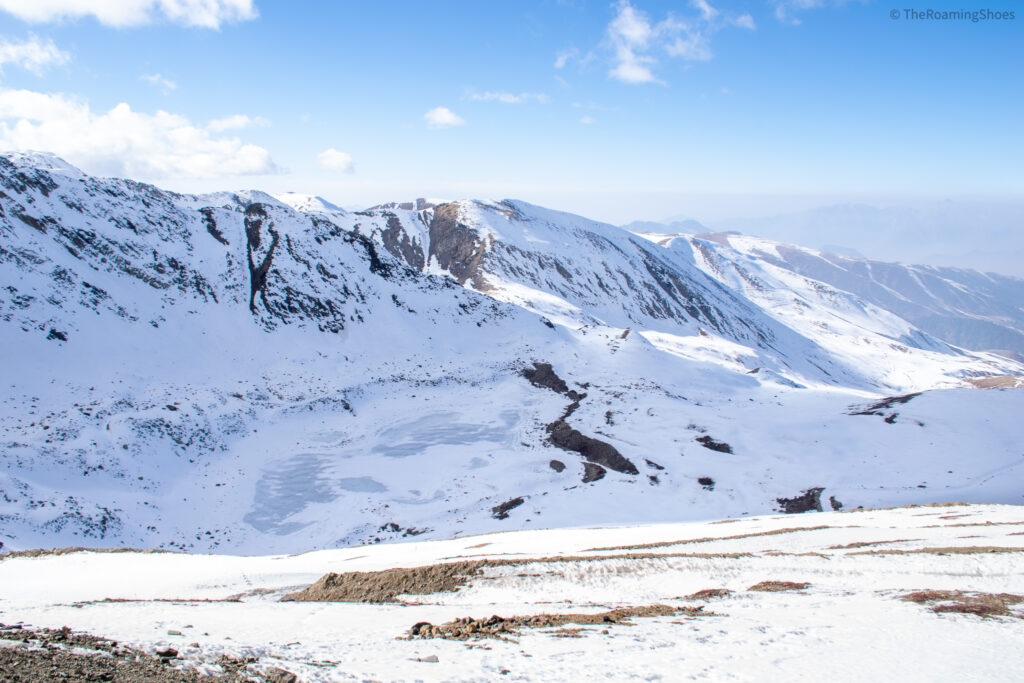
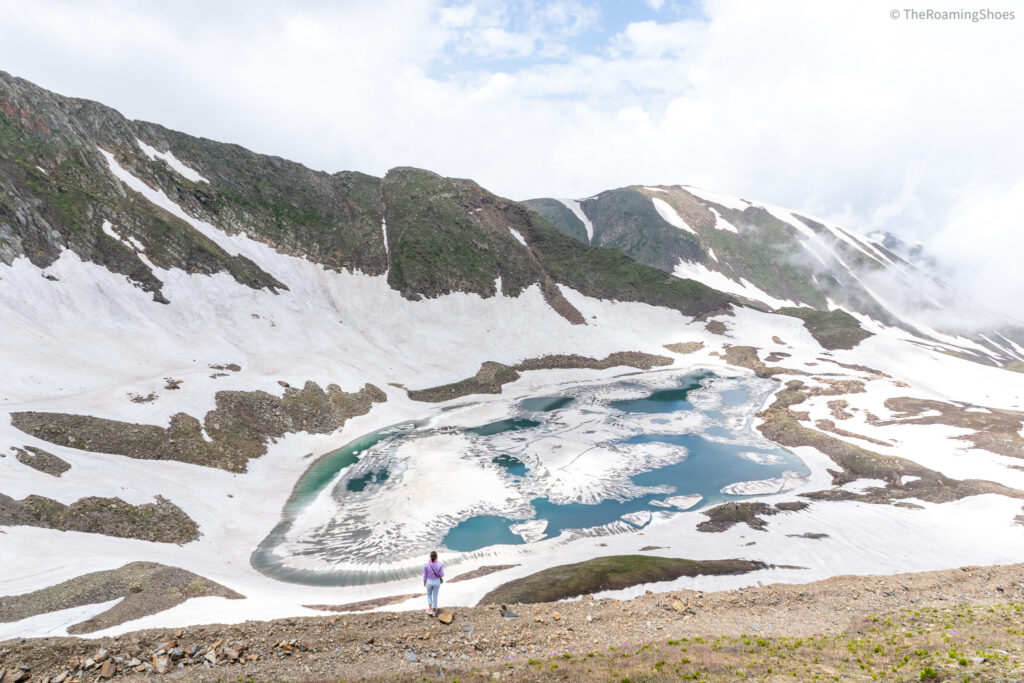
About Alpather Lake
Alpather Lake is a small yet scenic alpine lake lying at the foothills of the twin Apharawat Peaks. The lake is situated at an altitude of 14400 feet and stays frozen for more than half the year. That is why it is more popularly known as the Frozen Lake among locals. While the frozen lake in Winter presents an ethereal snow-covered view, Summers brings out the enchanting emerald Lake into life with the otherwise stark landscape flecked with wild flowers.
The lake can only be reached by trek from Gulmarg. As it is an offbeat place and is visited by very few people, the serenity it offers is unparalleled. But it is not just the charm of the lake, but the journey that makes it the experience of a lifetime.
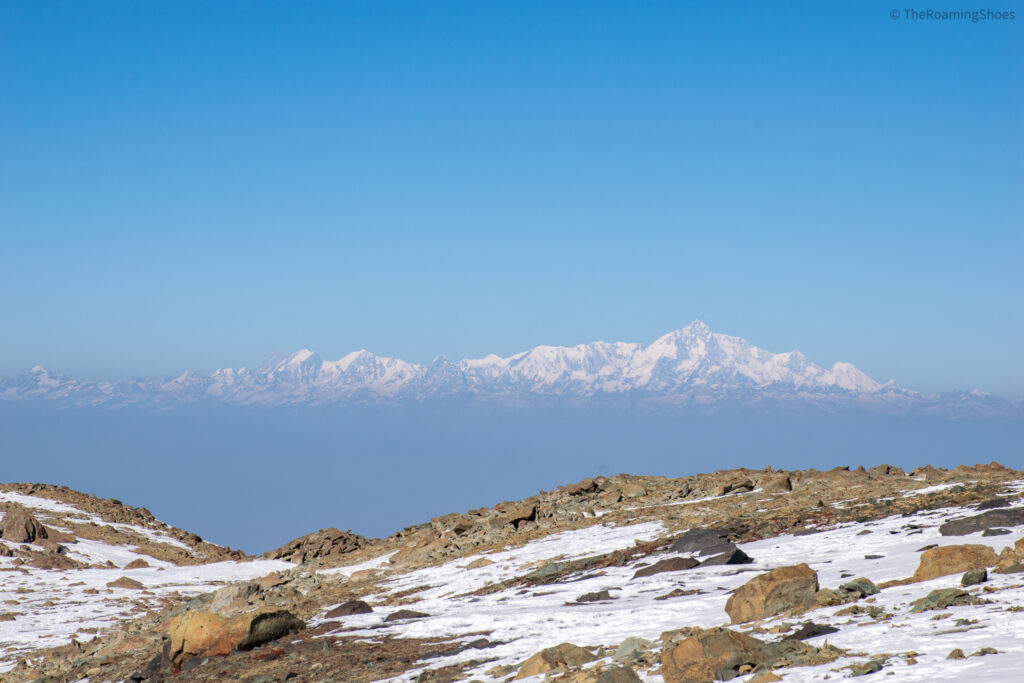
Is Alpather Lake trek difficult?
Trek to Alpather Lake may not be very difficult, but it is not easy too. I would rank it as MODERATE which needs a bit of physical fitness. Most part of the trek route is steep and is strewn with boulders.
Especially in Winter, it is easy to get out of breath every few steps while climbing the steep uphill path. Having said that, we do not hike regularly and this was our 1st trek in the mountains, that too in Winter. Yet we could manage it with the help of our guide. In Summer the trek felt relatively easier.
Do you need a guide for Alpather Lake trek?
Winter
YES, you must take a guide in Winter. Here is why.
- There is no clear marking of the trail. Not a single sign saying which path to follow and every side looked the same covered in snow. So it is easier to lose direction and end up getting delayed. Also, as it is the border area, you have to be extra careful about where you are headed.
- A guide can help in treading the snow covered path safely and with ease. Our guide helped both of us in climbing up and coming down at places that were difficult to step on and walked ahead to check the path before we could step foot there.
- Since the guides are locals who know the area well, they can help you in unforeseen circumstances. In our case, Sush stepped on soft snow and was waist deep in it within seconds. As he tried to come out, it started to pull him deeper. I am sure it would have been a disastrous situation had we not gone with a guide. He knew exactly what to do and helped pull Sush out.
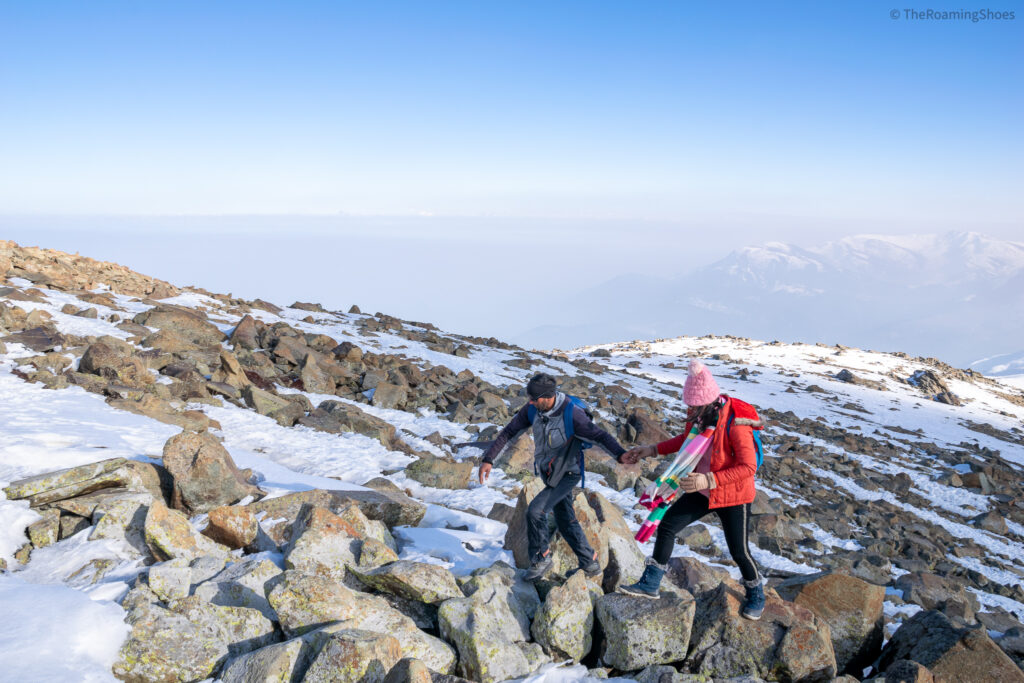
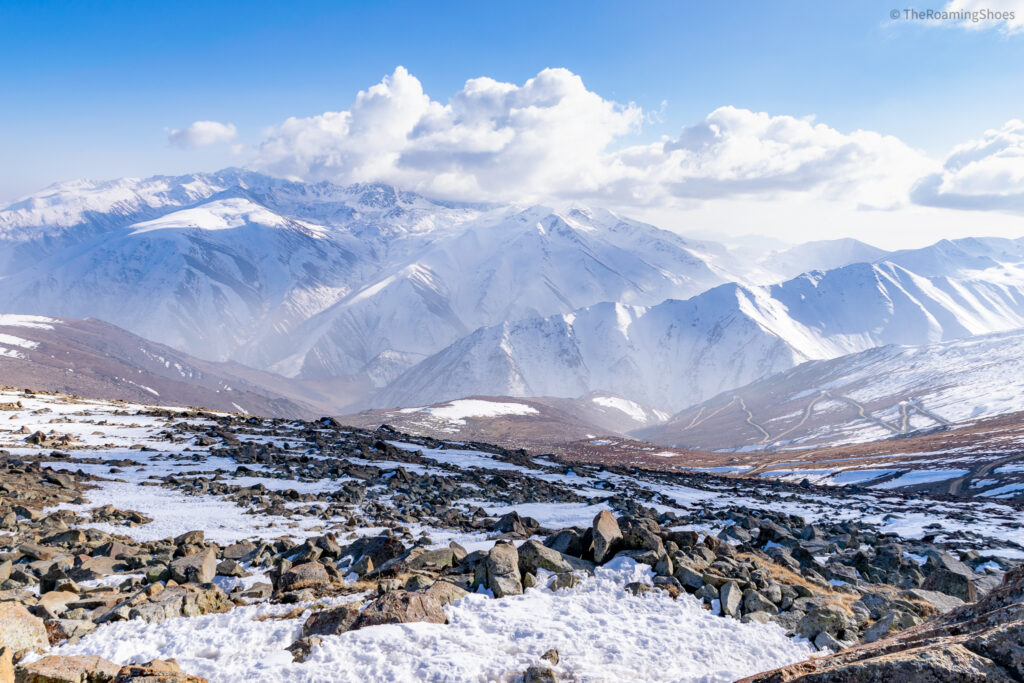
Summer
In Summer, taking a guide is optional. You can reach the lake by following the directions available in various forums. It may take you longer though. From my own experience, I recommend taking a guide if your answer is YES to any of the following.
- You are a casual trekker with no experience of the terrain and a not-so-good sense of direction.
- Have limited time in hand and it is your 1st time trekking to the lake
- Not so good in balancing over the rocks and boulders
On a lighter note, the guides take great photographs 🙂
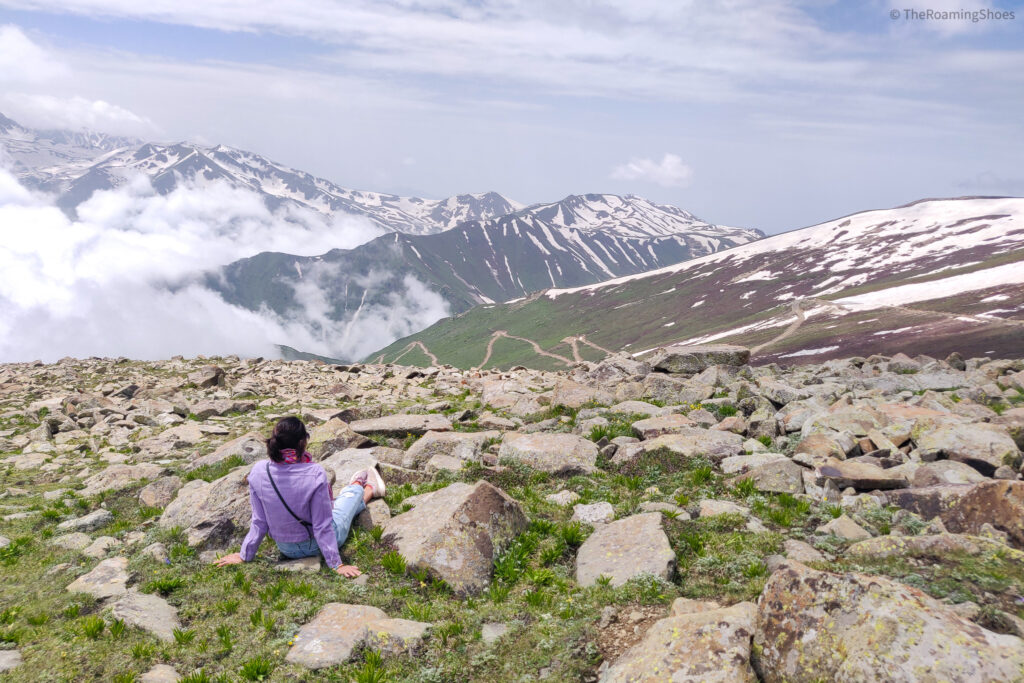
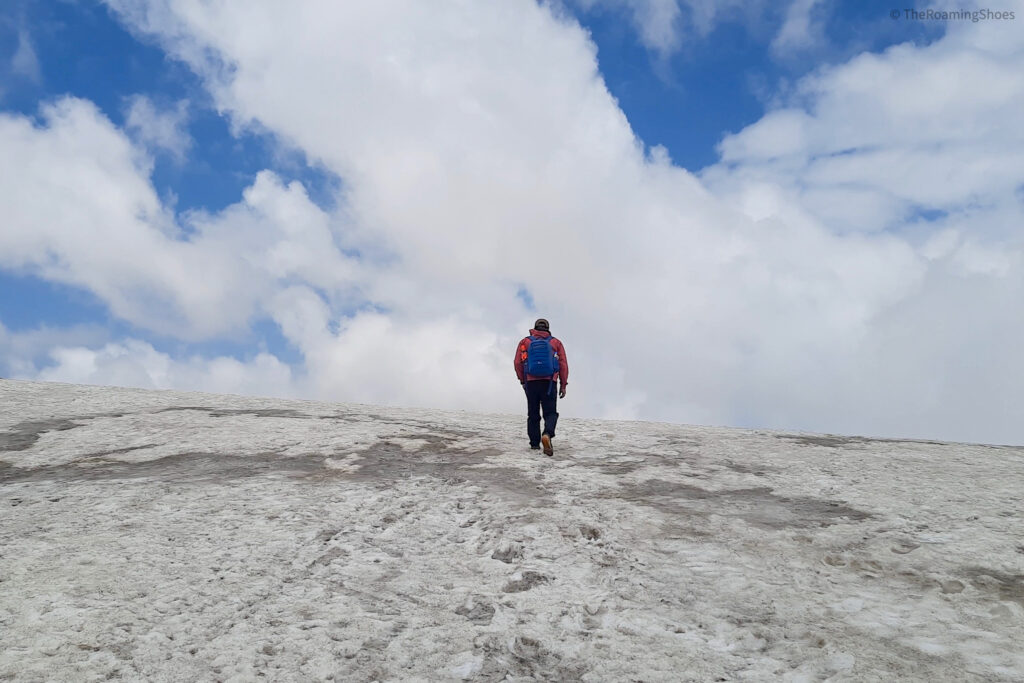
Know before you take a guide
- You can take a guide from Gulmarg itself or find one at the Phase 2 Gondola station.
- Guides charge very high for this trek, around INR 2500 or even more (official charge is INR 1300). You need to bargain, but it does not come down a lot. This time a guy quoted INR 4000 for the trek from Phase 2 station and we finally agreed for INR 2000 including the tip.
- If you take the guide from Gulmarg, they tend to push for the activities at Gondola Phase 1 and Phase 2 due to their commission. Unless it is peak winter when the sledge or skiing path is already smoothened, avoid the activities. As part of our Winter visit (during December 1st week), there was not enough snow both in Phase 1 and 2. So the Skiing as well as Sledge ride were absolutely scary and uncomfortable. Sush even hurt his back during the sledge ride.
Guide Details
We had two different guides in Winter and Summer. They both were apt and helped us all through the trek. But given to choose, I would recommend the person who accompanied us in Summer. He is from one of the mountain villages and is a very humble person. What we liked more about him was he was not too greedy and did not bother us for more money after the trek was over which normally others do. Here is his contact detail.
Muzaffar Bhai: +91-9107441884
Where to Start the trek and Time Required
Depending on available time and your fitness level, the trek to Alpather lake can start from any of these 2 points.
Option 1: From Gulmarg
First one is from Gulmarg town which can be done as a day trek. It covers a distance of approx. 13 kms and requires a very good fitness level. This is intended more for the regular trekkers.
Option 2: From Gondola Phase 2 station
Second one is a shorter trek suitable for hiking and nature enthusiasts with medium fitness level. It takes approx. 3-4 hours for the trek including the time spent at the lake. For this, you need to reach Gondola Phase 2 station first from where the trek begins. So take the Gondola from Gulmarg to Phase 1 (Kongdori) first and then take the Phase 2 Gondola from there. The whole thing will take a little more than half a day, considering the time spent in the queue at both Gondola stations.
If you opt for option 2, book your Phase 1 and Phase 2 Gondola tickets beforehand (at least a month before). The tickets get sold out fast in the peak season. Now it is easier to book the tickets on your own as the booking is done online.
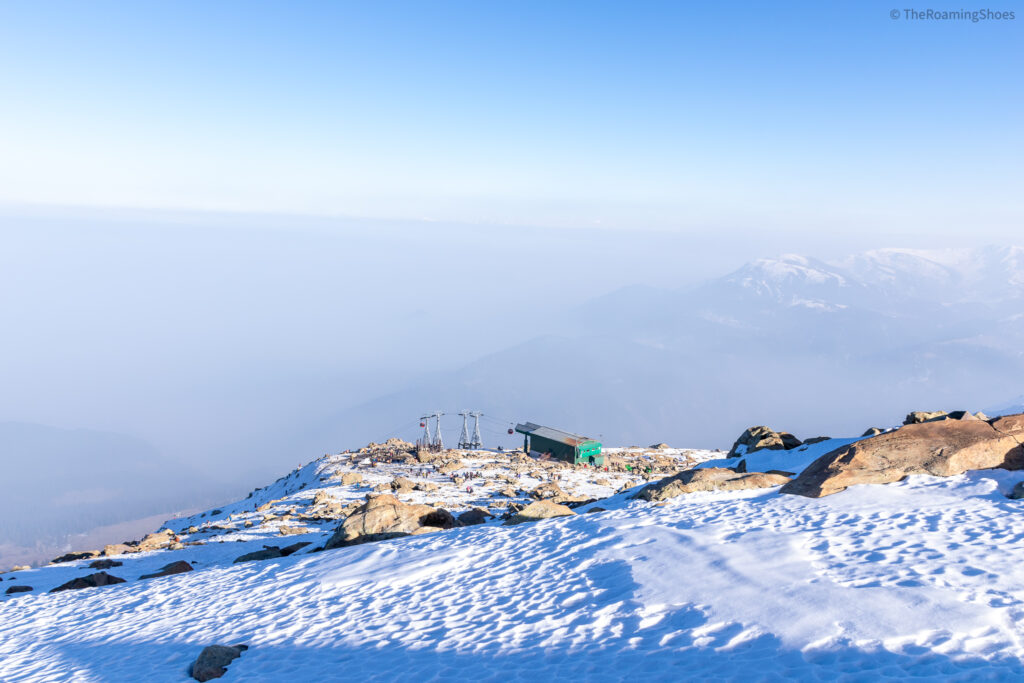
Reaching the Lake
Here is a little guide to give you a sense of the trek route and how you can reach the lake from gondola station. As you come out of the Phase 2 station, look at your right and you will notice a rocky peak. Start climbing towards the top. This is the 1st milestone you need to conquer and I found it the hardest part of the trek. Then it becomes a lot easier. Keep walking and gaining height until you reach the vantage point from where you can see the lake lying at the foothill of the mountains.
Now, if you have the time and energy, you can go down to the lake. In Summer, it is actually pretty easy to climb down the mountain slope to go near the lake. Since there was still lot of snow left in July, we decided to have a look from above and not go down any further.
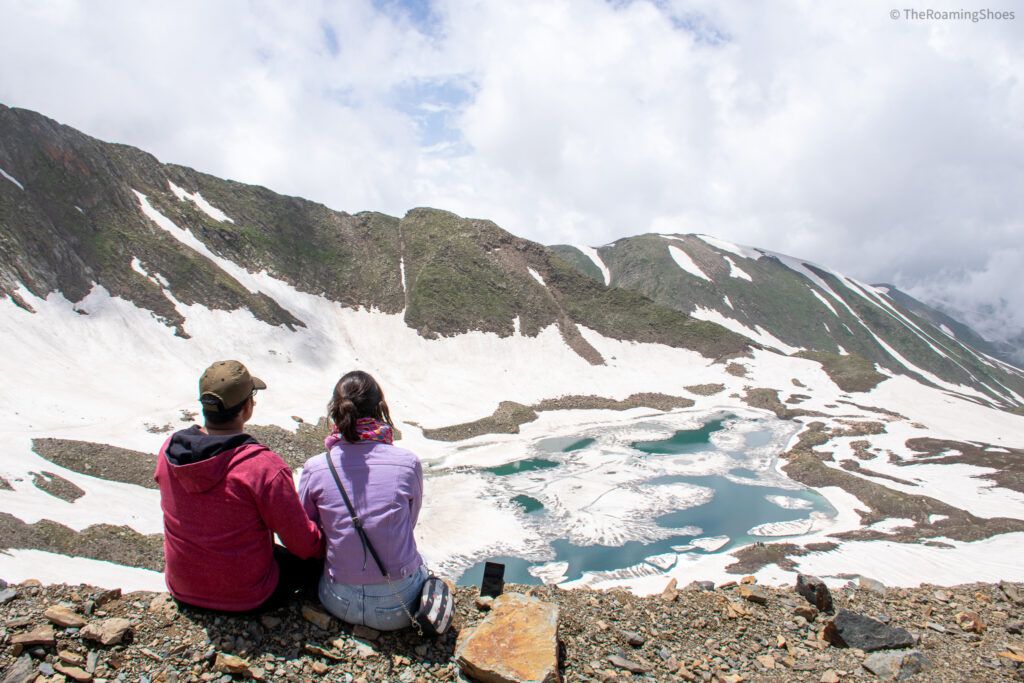
The Trek in Pics : Winter vs Summer
Winter
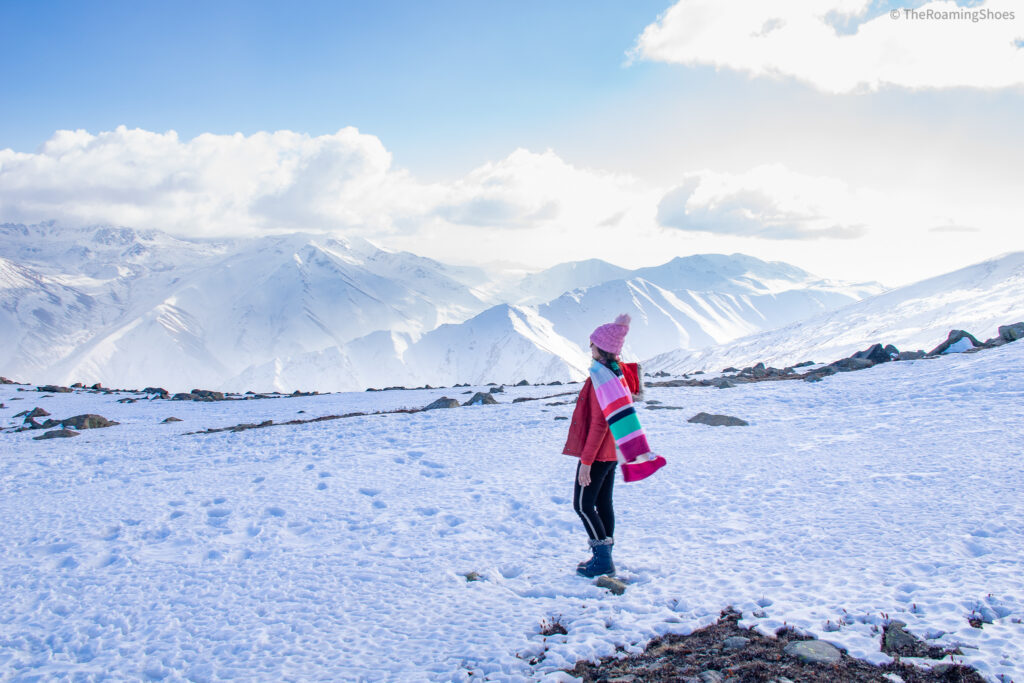
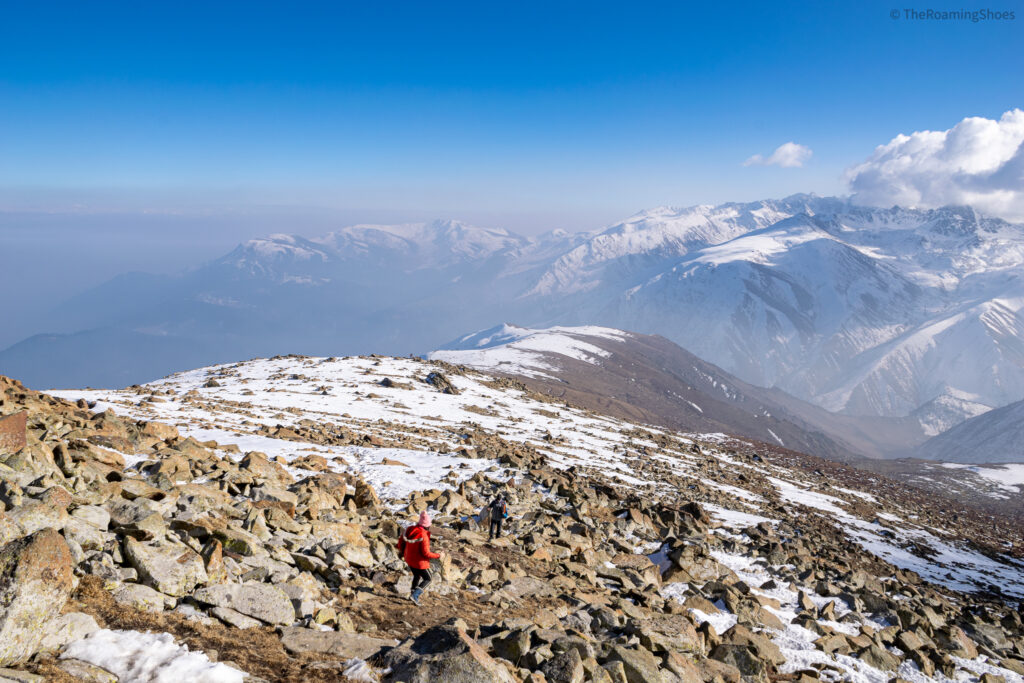
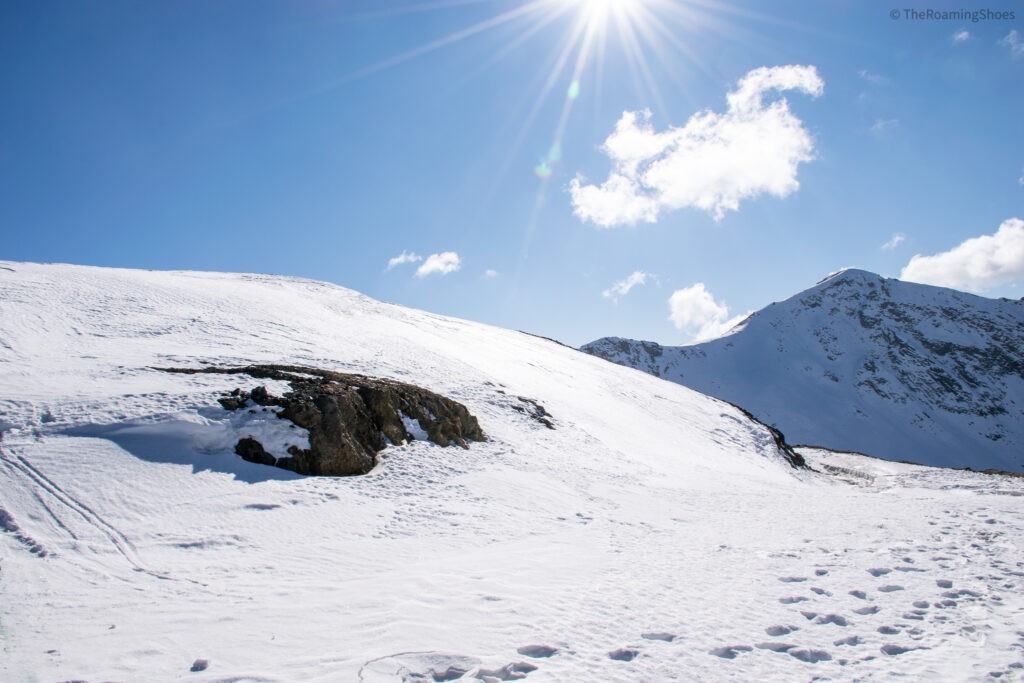
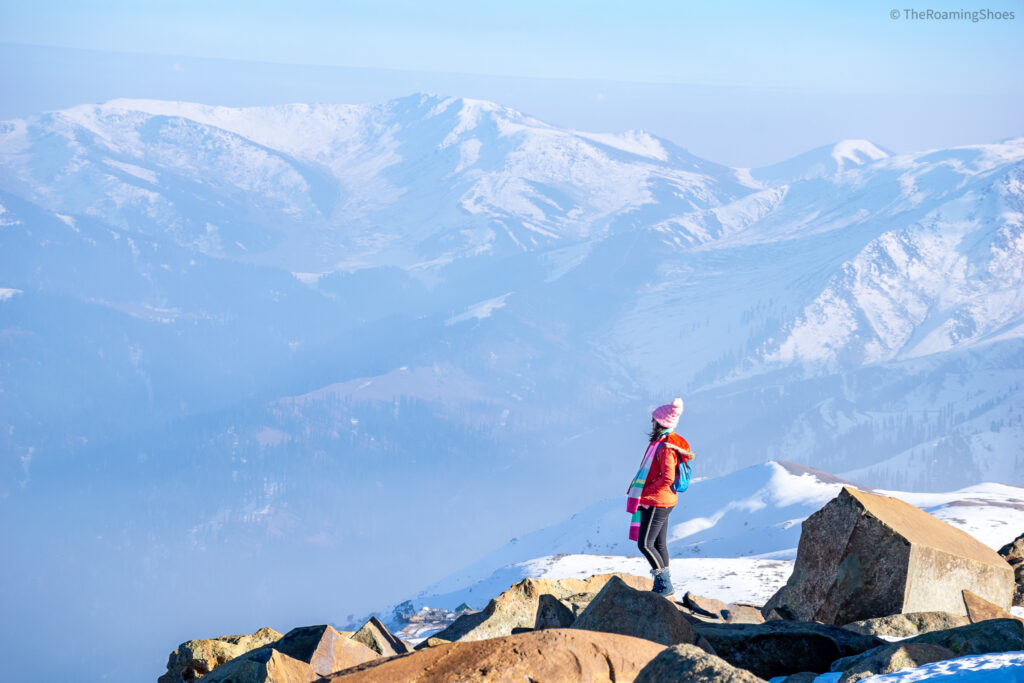
Summer
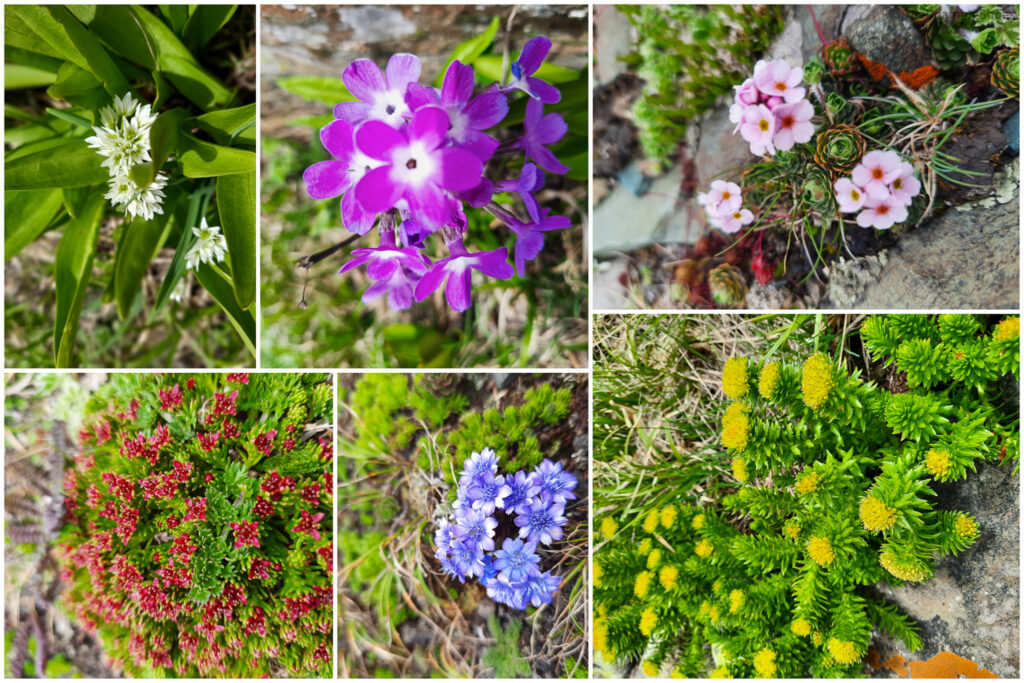
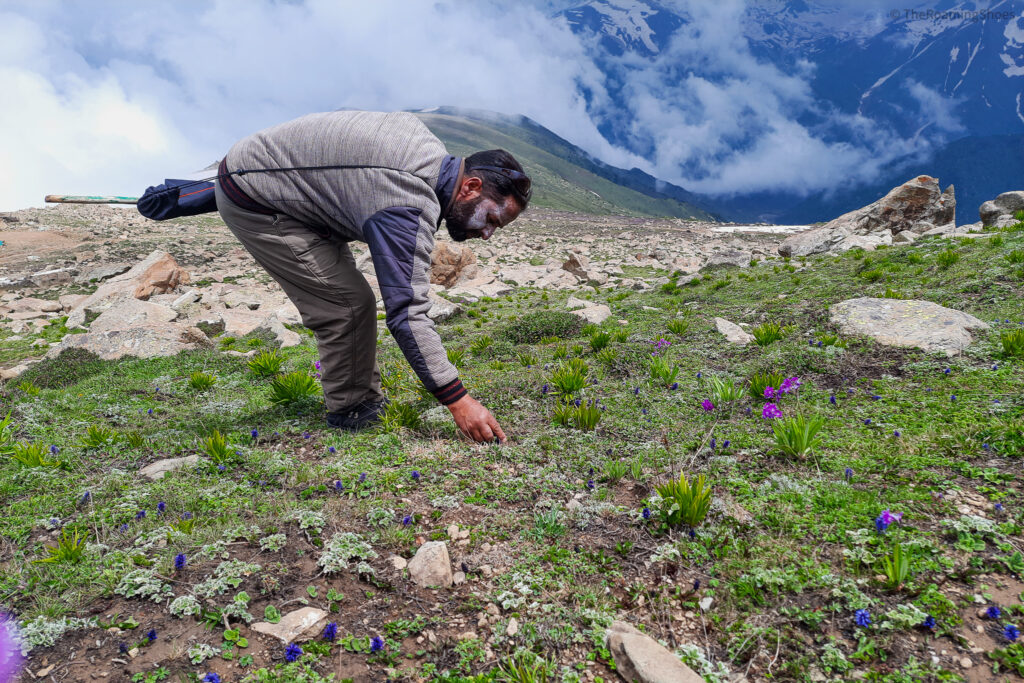
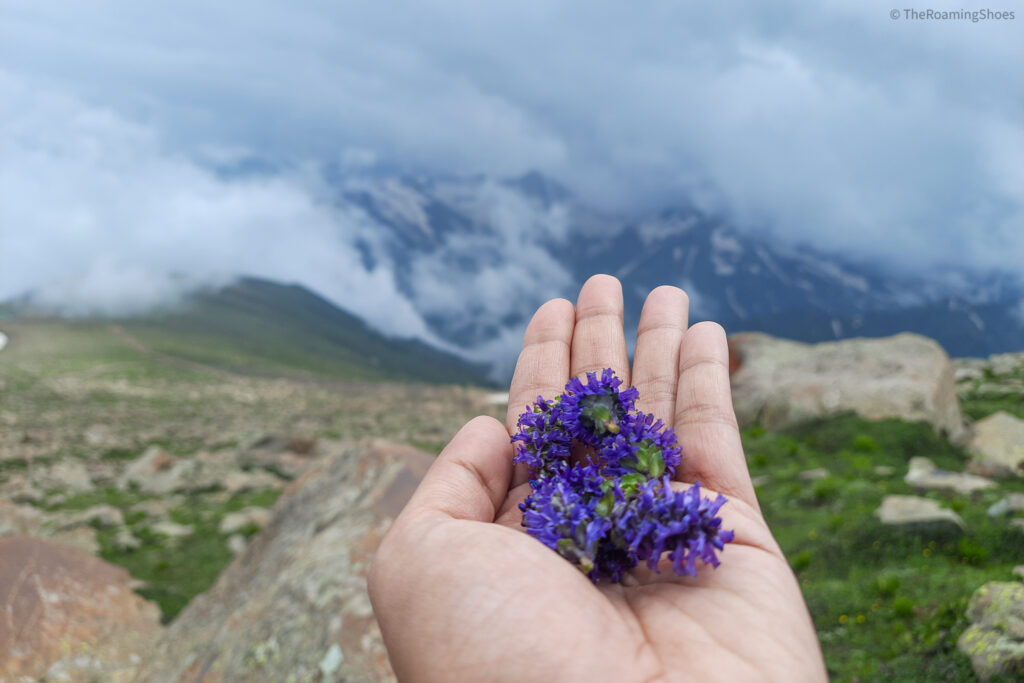
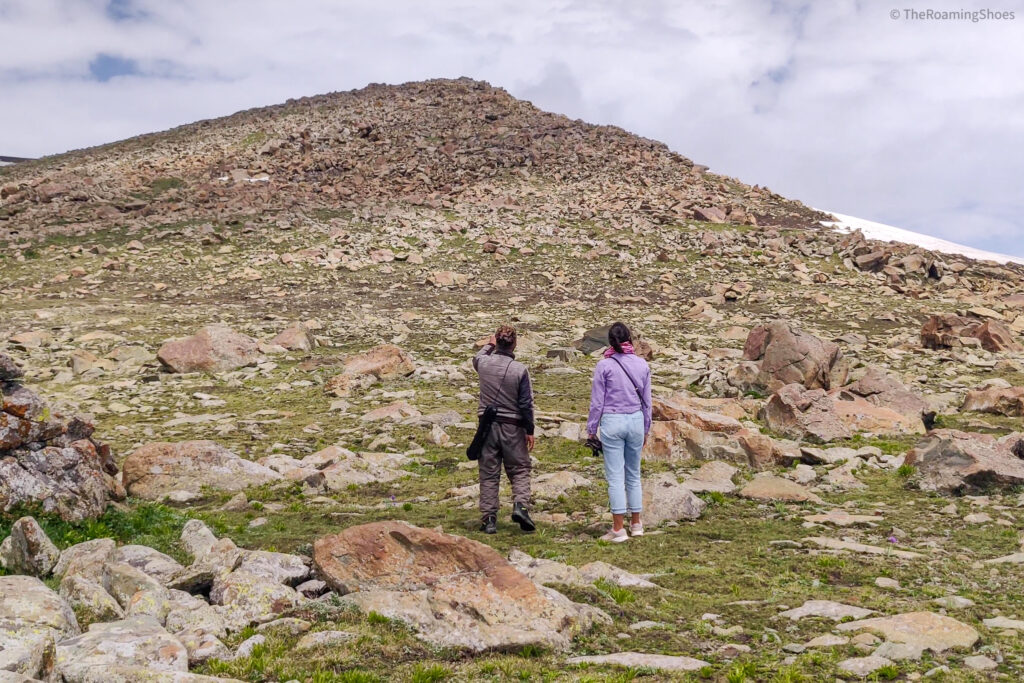
Best time to visit Alpather Lake
We have visited Alpather Lake once during December 1st week and then during July 1st week. From our own experience and what we understood from local people and guides, here is a breakdown of the ideal times for this trek. Also, how the trekking path and the lake may look like during different seasons.
July to September – The best time to see the lake with its enchanting Blue colour. This is when the lake starts to melt and so does the snow in the trek route, giving way to more green patches and wildflowers. In the beginning of July, we could see the lake partially frozen and patches of snow left in the mountains close to the lake.
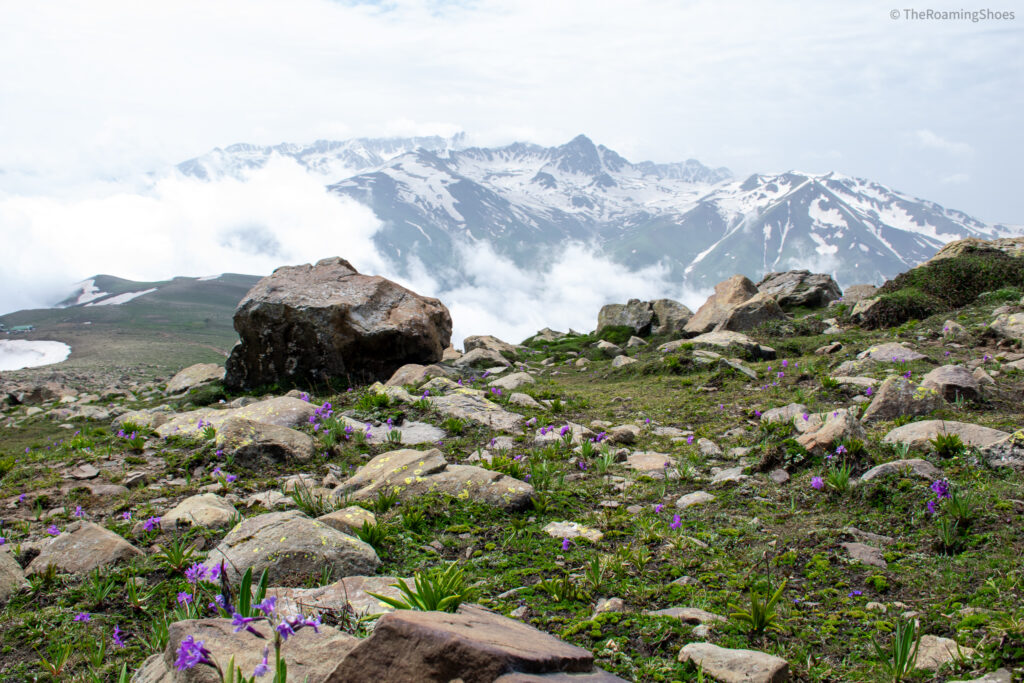
April-June – Another good time if you want to see the lake in its frozen state. The trek route will still have a lot of snow which gradually starts melting May onwards. Go with proper shoes and with a guide. The lake starts to melt later in June.
Other than the above months, here is a breakdown of the condition in the other months.
October – The cold starts to settle in and weather can be a little unpredictable. But the lake is not frozen yet and trek route does not have snow. Early October can be a good time to visit the lake. There may be some snowfall towards the later part of the month.
November-Early December:
Winter makes its way into the valley and days grow colder. There will be occasional snowfall and the lake starts to freeze during November. By December 1st week (during our visit) the lake was already frozen and the trek route was covered in snow towards the upper region.
Late Dec-March– Peak Winter with frequent snowfalls (especially till Feb) and few feet of snow on the ground. The trek route is completely covered in snow and the lake is frozen.
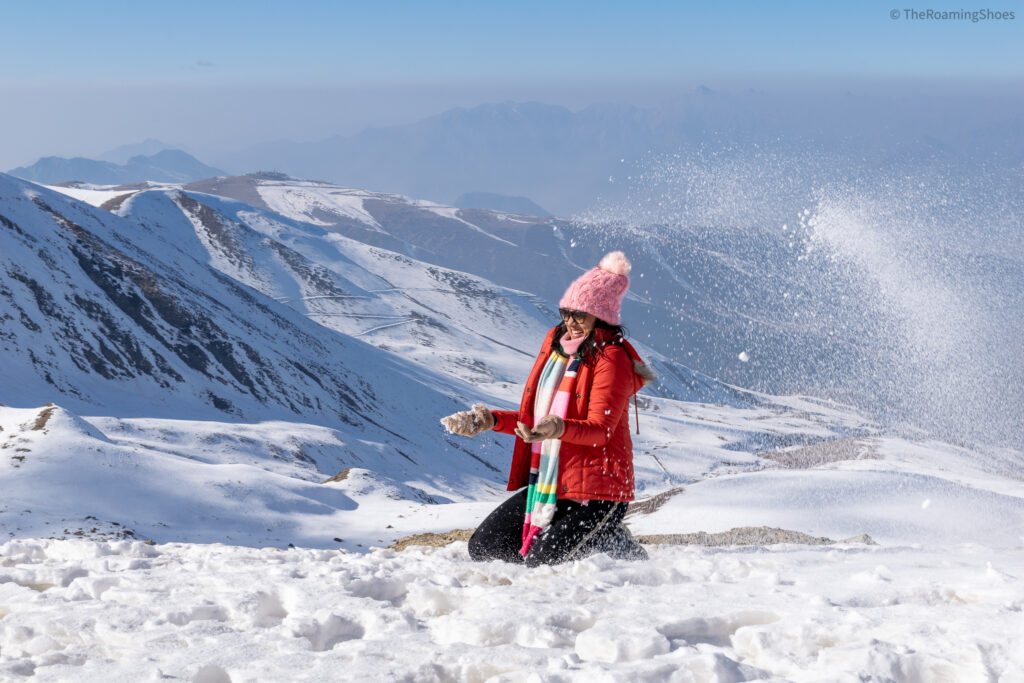
What to pack for the trek
For Winter
- Pair of good Thermals
- Good woollen scarf and beanie
- Warm waterproof Gloves
- Fleece layer and sweater
- Good jacket that can resist wind and subzero temperatures (preferably waterproof)
- Waterproof pants
- Thermal Socks
- Waterproof Shoes with good Grip – My winter shoe from Decathlon and Sush’s regular Woodland worked fine for the trek. But if it’s even further into Winter, you may need shoes with a higher neck.
For Summer
- A good waterproof jacket (preferably with a hoodie)
- Raincoat (Especially for July-August)
- Shoes with good grip
Know before you go
- We recommend staying overnight in Gulmarg if you opt for this trek. It will get exhausting if you do the trip from Srinagar on the same day. And there will be no time left to visit the other attractions in Gulmarg.
- Choose the 1st half of the day for this trek and start early. The wind normally gets stronger and weather gets unpredictable in the 2nd half.
- If you do the trek in the later part of the day, make sure to come back by the time the last Gondola leaves Phase 2 (Its 3:30pm in Winter and 4pm in Summer).
- The altitude of the lake is quite high. So avoid running around or staying too long, especially in winter.
- Carry enough water for the trek. And also some snacks and chocolates to reenergise yourself. After you leave the Gondola station, there is no option to get water or food on the way.
- There is no option to stay near the lake. Camping is not allowed too.
- For Winter trek, cover yourself in layers and do not expose your hands and ears. Even though you may not realise during the trek, the cold ultimately gets to you, especially if you are not from a cold region.
- This trek is not suitable with children and old people. Also, people with severe Asthma and other physical issues should not try the trek.
Conclusion
We have now seen Alpather Lake twice, in two different seasons and two different forms. And both times, the lake made our hearts leap with unbound joy. The 1st time, it came as a saviour when we were disappointed due to delayed snowfall in Gulmarg. And the 2nd time, it was more like meeting an old friend, treading a path already familiar. It is a place you can never get enough of and I know in my heart this was not our last time either.
Hope our blog helps you find your way to this stunning mountain Lake. But remember, places like these can stay beautiful forever only when we are responsible visitors.
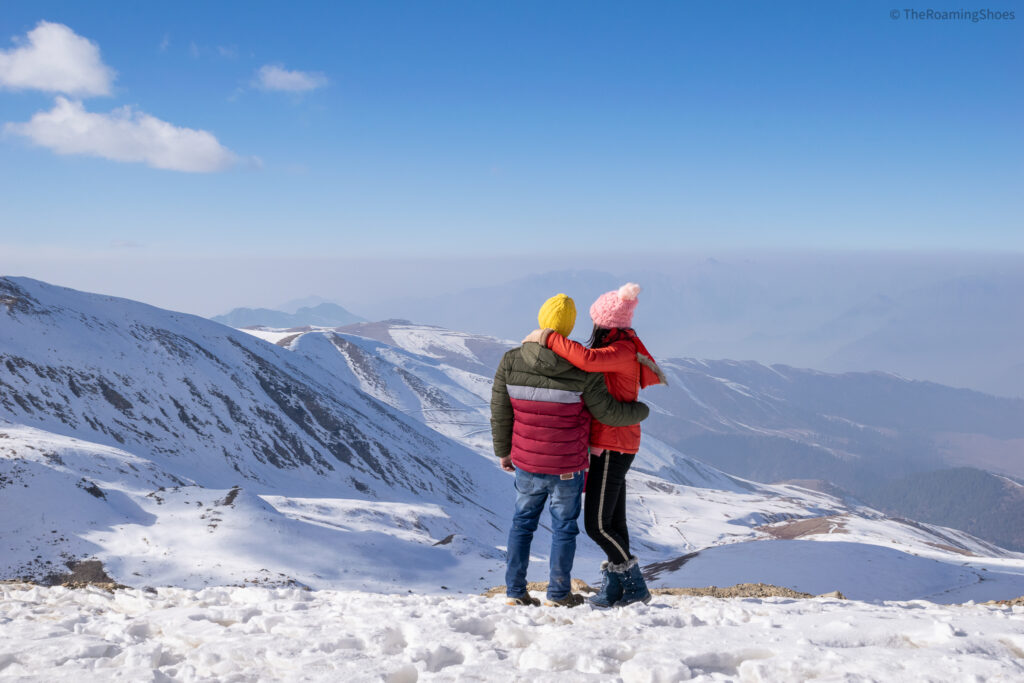
That’s all for now. If you have any questions, leave us a comment and we will try to get back to you at the earliest.
Planning a trip to Kashmir? Read our other Kashmir blogs here.
